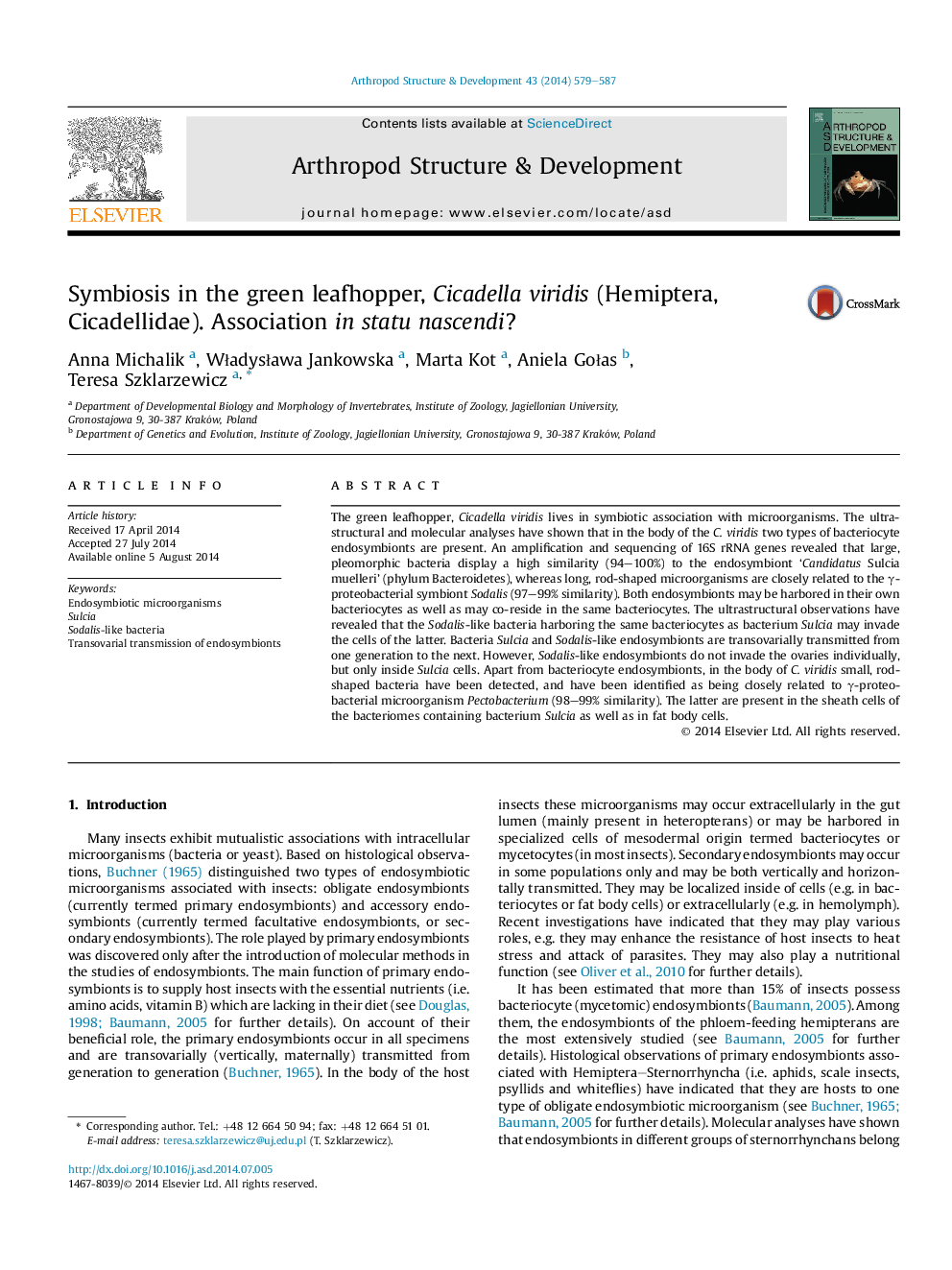| کد مقاله | کد نشریه | سال انتشار | مقاله انگلیسی | نسخه تمام متن |
|---|---|---|---|---|
| 2778669 | 1153156 | 2014 | 9 صفحه PDF | دانلود رایگان |

• In the body of Cicadella viridis two types of bacteriocyte endosymbionts occur.
• Pleomorphic bacteria are related to ‘Candidatus Sulcia muelleri’.
• Rod-shaped bacteria are related to the Sodalis-like bacteria.
• Endosymbionts are transovarially transmitted from one generation to the next.
The green leafhopper, Cicadella viridis lives in symbiotic association with microorganisms. The ultrastructural and molecular analyses have shown that in the body of the C. viridis two types of bacteriocyte endosymbionts are present. An amplification and sequencing of 16S rRNA genes revealed that large, pleomorphic bacteria display a high similarity (94–100%) to the endosymbiont ‘Candidatus Sulcia muelleri’ (phylum Bacteroidetes), whereas long, rod-shaped microorganisms are closely related to the γ-proteobacterial symbiont Sodalis (97–99% similarity). Both endosymbionts may be harbored in their own bacteriocytes as well as may co-reside in the same bacteriocytes. The ultrastructural observations have revealed that the Sodalis-like bacteria harboring the same bacteriocytes as bacterium Sulcia may invade the cells of the latter. Bacteria Sulcia and Sodalis-like endosymbionts are transovarially transmitted from one generation to the next. However, Sodalis-like endosymbionts do not invade the ovaries individually, but only inside Sulcia cells. Apart from bacteriocyte endosymbionts, in the body of C. viridis small, rod-shaped bacteria have been detected, and have been identified as being closely related to γ-proteobacterial microorganism Pectobacterium (98–99% similarity). The latter are present in the sheath cells of the bacteriomes containing bacterium Sulcia as well as in fat body cells.
Journal: Arthropod Structure & Development - Volume 43, Issue 6, November 2014, Pages 579–587